Key takeaways
- Haunted artifacts are believed to absorb emotions and experiences, inviting personal reflection about their history and significance.
- Museums are common sites for paranormal phenomena, such as flickering lights and inexplicable cold spots, enhancing the exploration of historical connections.
- Documenting paranormal encounters involves detailed notes and reflections on emotions, which can provide deeper insights into the experiences.
- Maintaining safety while visiting haunted museums includes being aware of surroundings, respecting personal boundaries with artifacts, and staying with a group.
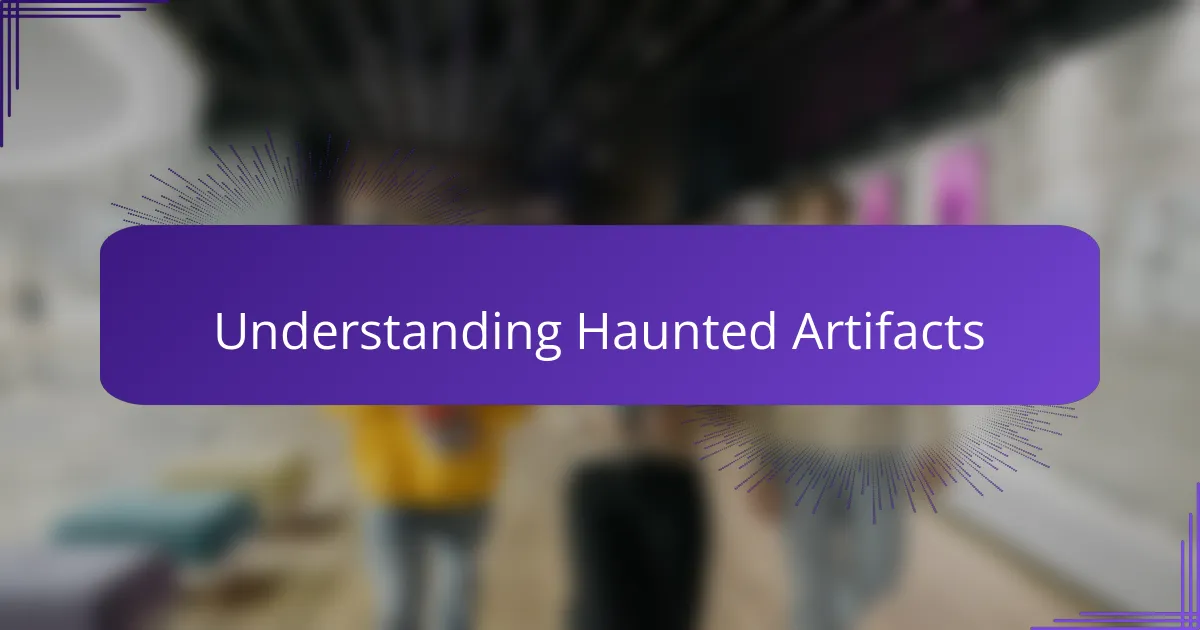
Understanding Haunted Artifacts
Ever wondered why certain objects seem to carry an unsettling energy? Haunted artifacts are believed to absorb and retain the emotions or events connected to their history, almost like a silent witness to past moments. From my experience, handling one of these items can feel like stepping into a story that’s alive, blurring the line between the physical and the paranormal.
When I first came across a supposedly haunted artifact at the museum, I noticed a strange chill that wasn’t explained by the room’s temperature. It made me question how much of what we see is just matter and how much might be a vessel for something unseen. Have you ever touched something and felt an inexplicable weight or presence? That’s what makes haunted artifacts so captivating—they invite us to explore beyond sight and logic.
Understanding haunted artifacts isn’t just about superstition or ghost stories; it’s about recognizing the emotional imprints objects can carry. I’ve found that these artifacts often evoke personal reflection—prompting me to ask, what memories or energy does this object hold, and how might that connect to my own sense of awareness? This perspective adds a nuanced depth to the seemingly ordinary.
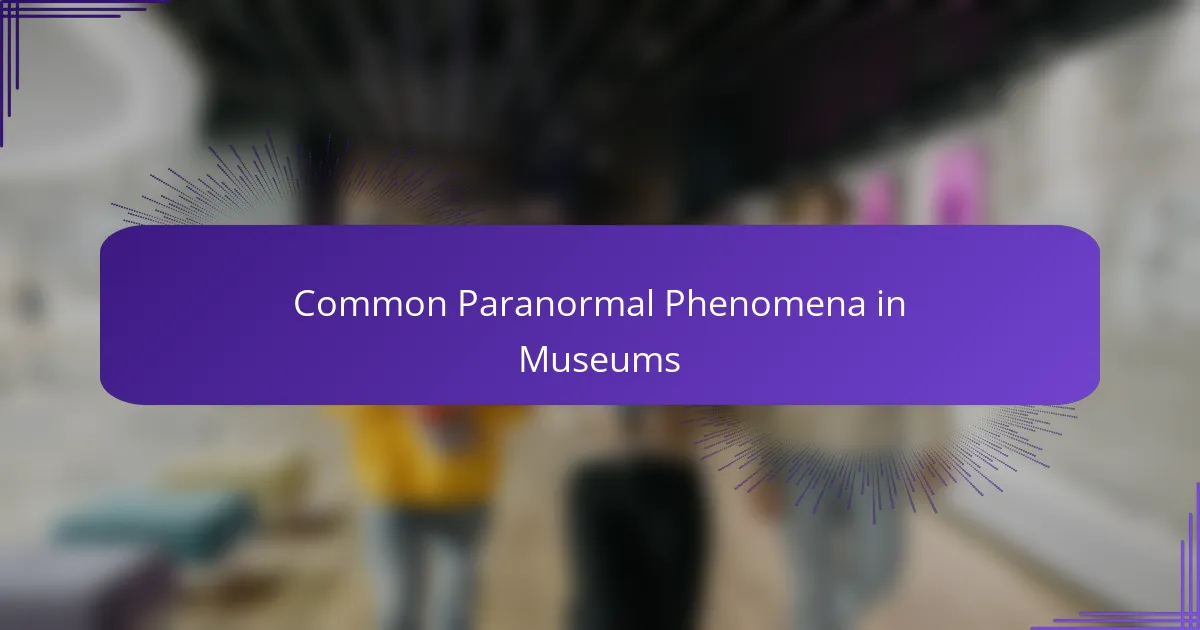
Common Paranormal Phenomena in Museums
Museums are ripe grounds for paranormal activity, or so my experiences suggest. Flickering lights, sudden drops in temperature, and unexplained whispers seem to be the usual suspects haunting these dimly lit corridors. Have you ever walked down a quiet hallway and felt like something was watching you? That feeling, I’ve learned, is more common in museums than one might think.
One of the phenomena I encountered frequently is the sensation of being touched or brushed by unseen hands, especially near exhibit cases or long-forgotten relics. It’s subtle but unmistakable—like a gentle nudge reminding you that history isn’t always silent. To me, these moments raise fascinating questions about the connection between objects and the unseen energy around them.
Another typical occurrence involves electronic disturbances, where cameras or audio recorders suddenly malfunction in certain rooms. I once had my flashlight dim unexpectedly multiple times while standing near an old portrait, and it felt as though the artifact was trying to communicate. These glitches aren’t just technical; they seem to mirror the unsettled spirits often linked to haunted artifacts, adding another layer to the museum’s mysterious atmosphere.
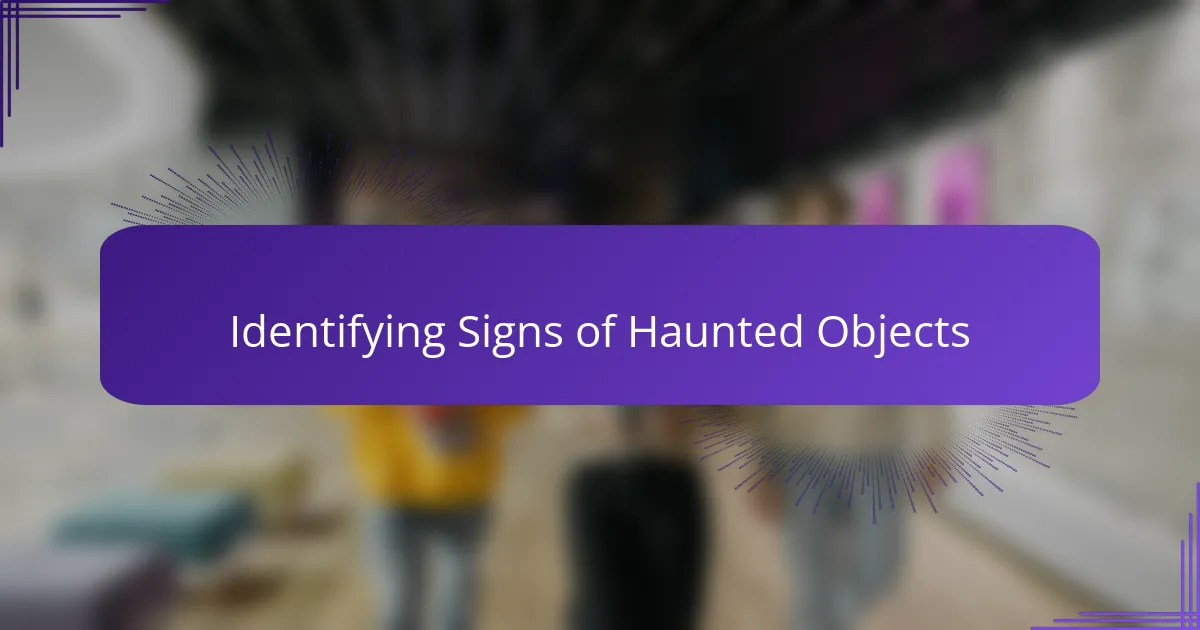
Identifying Signs of Haunted Objects
What do haunted objects really feel like? From my personal encounters, subtle signs often reveal their eerie nature—like sudden cold spots or a sense of heaviness that settles over you without warning. It’s as if the air around them thickens, making every breath a little more deliberate.
I remember once standing close to an old locket when a faint whisper seemed to brush past my ear. At first, I doubted my senses, but the lingering unease stayed with me long after. That moment made me realize that haunted artifacts don’t always announce themselves loudly; sometimes their presence is quiet, almost a gentle warning.
Ever noticed how some objects make your skin crawl or spark vivid memories out of nowhere? Those feelings, while hard to explain, are important clues. They suggest that beyond the physical, there’s an unseen energy woven into the artifact’s story—waiting for someone curious enough to sense it.
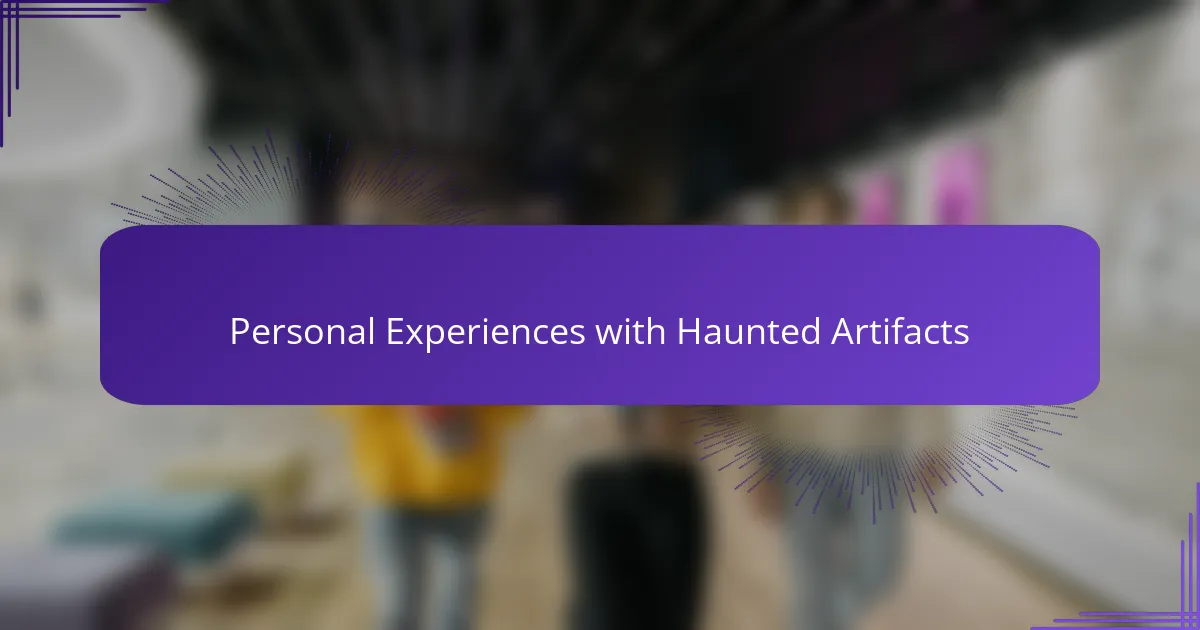
Personal Experiences with Haunted Artifacts
The first time I held a weathered pocket watch rumored to be haunted, an overwhelming sadness washed over me, as if the weight in my hand was more than just metal. Have you ever had that eerie pause where time seems to slow, and you wonder about the lives entwined with the object before you? That moment stuck with me, blurring the boundary between history and haunting.
On another occasion, while examining a cracked porcelain doll behind glass, a sudden chill crept up my spine despite the warmth of the room. It wasn’t just cold; it was like an invisible presence pressing close, reminding me that some artifacts carry more than stories—they carry emotions. How often do we overlook the silent emotions embedded in things we think are lifeless?
What fascinates me most is how these encounters spark questions rather than answers. After touching a rusty key said to unlock unseen doors, I felt a brief flicker of anxiety mixed with curiosity. Why do certain objects provoke such conflicting feelings? For me, that tension is part of the haunted artifact’s mystique—an invitation to keep exploring the unknown.
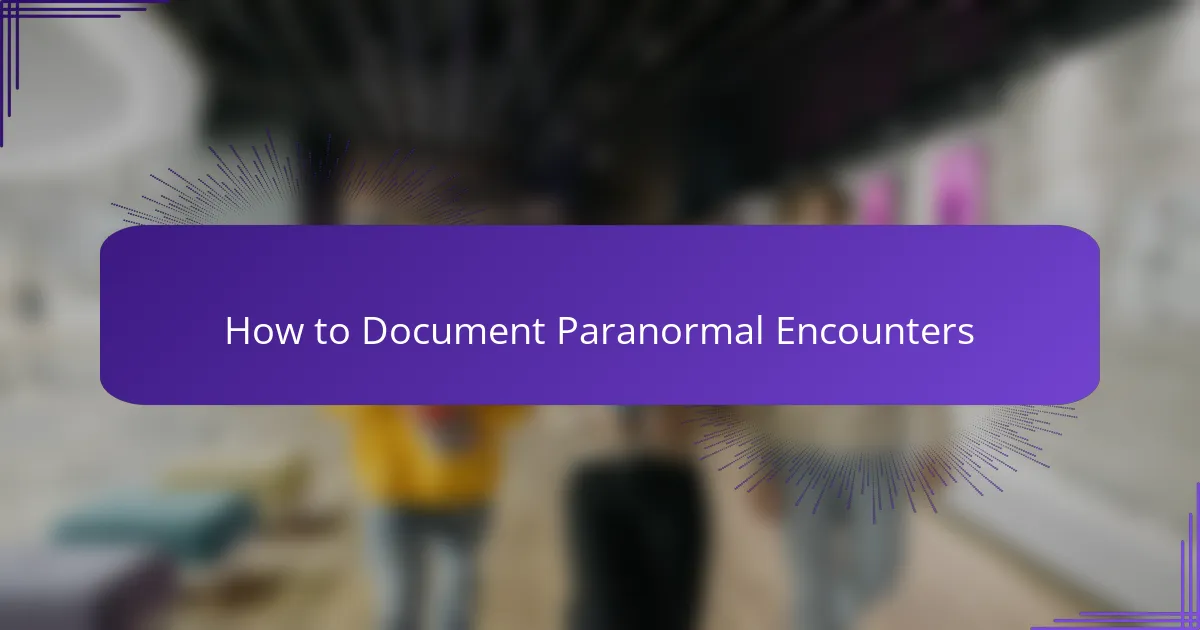
How to Document Paranormal Encounters
When I first started documenting paranormal encounters, I quickly realized that capturing the experience requires more than just snapping photos. Writing down the exact time, location, and what I felt or heard helps create a clearer picture of the event. Have you ever tried to describe an eerie chill or an unexplained noise right after it happens? Doing it immediately makes all the difference.
Using recording devices like audio recorders or video cameras can be tricky — sometimes they pick up strange static, and other times they fail right when something happens. From my experience, combining these with detailed personal notes gives a fuller account. It’s fascinating how the mix of technology and personal observation can reveal layers you might otherwise miss.
But the most valuable part of documentation, I’ve found, is reflecting on the emotions tied to the encounter. How did the moment make me feel? Nervous, curious, uneasy? These subjective details turn a simple report into a vivid story, inviting others to connect with the mystery on a deeper level. Have you noticed how your feelings often become the strongest evidence of something truly paranormal?
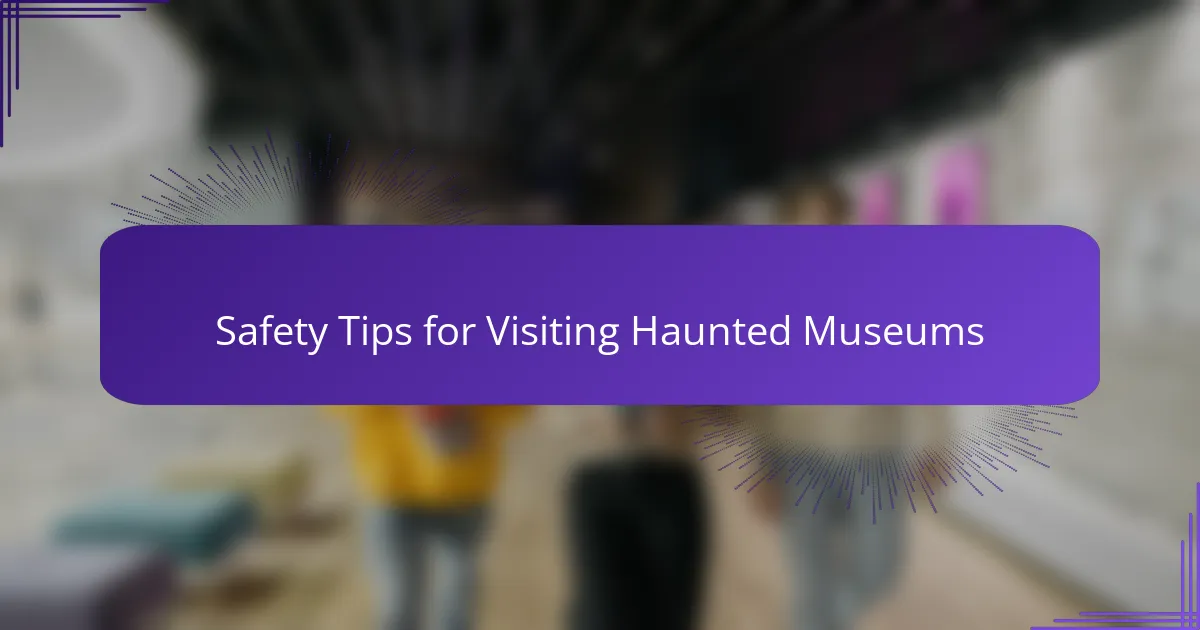
Safety Tips for Visiting Haunted Museums
When visiting haunted museums, I always make sure to stay aware of my surroundings and trust my instincts. If a particular room or artifact gives me an uneasy feeling, I don’t hesitate to take a step back or even move on. Have you noticed how sometimes your gut knows more than your eyes in these settings? Listening to that inner voice can be your best safety net.
I’ve found that keeping a small flashlight and not wandering off designated paths makes a huge difference in maintaining safety. These places often have uneven floors or low lighting, which can be tricky when you’re focused on the paranormal rather than the physical space. Plus, sticking with a group or a guide helps—there’s comfort in shared experiences, and it’s easier to stay grounded.
Lastly, I always remind myself to set clear personal boundaries with haunted artifacts. It might be tempting to reach out and touch something mysterious, but sometimes that’s when I’ve felt the strongest waves of uncomfortable energy. Would you approach that locket or doll with caution, knowing it might carry emotional or spiritual weight? Respecting these boundaries not only protects you but honors the stories embedded in those objects.
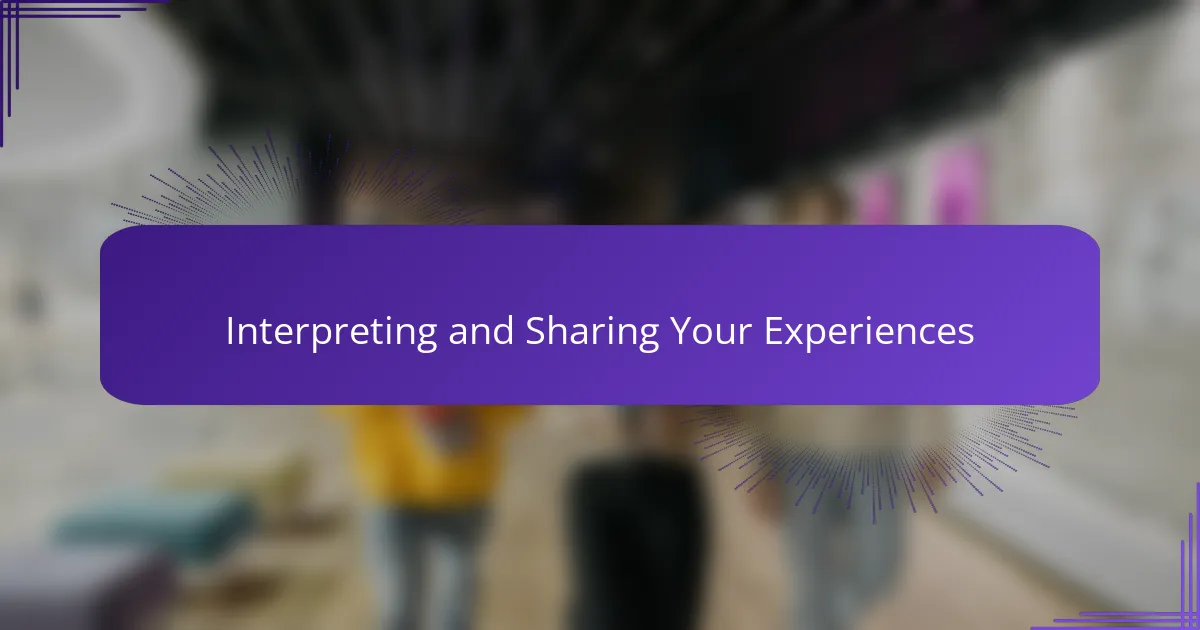
Interpreting and Sharing Your Experiences
Interpreting my experiences with haunted artifacts often feels like piecing together a puzzle without knowing the final picture. How do you make sense of an eerie chill or a whisper when there’s no clear explanation? I’ve learned to trust my instincts and let emotions guide me—sometimes, what I feel reveals more than what I see.
Sharing these encounters can be both thrilling and daunting. When I recount a moment of sudden cold or an inexplicable presence, I notice how listeners react—some skeptical, others intrigued. Do you think speaking about the unknown helps demystify it, or does it deepen the mystery? For me, opening up invites fresh perspectives that enrich the experience.
I also find that writing down details soon after an encounter helps me process it more clearly. Reflecting on questions like “What did this moment mean to me?” or “How did it challenge my understanding?” turns a fleeting feeling into something meaningful. Have you ever felt an experience shift your worldview just by taking the time to reflect and share? That, to me, is the true power of exploring haunted artifacts.